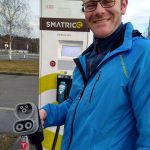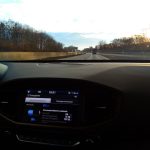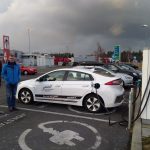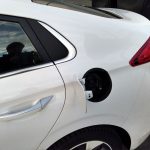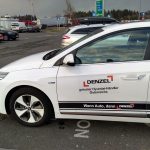Hyundai Ioniq Testdrive
All-weather all-electric car test drive
I made use of the Styrian government incentive to rent an electric car for six days for a low amount of money. The registration was open since October 2017 but very soon booked out. The chosen car was a Hyundai Ioniq Electric.
It comes with a 28 kWh LiPo battery, has a motor with 88 kW (120 HP) and 295 Nm of torque. The claimed range is 280 km (NEDC) but in real driving conditions (at around zero degrees celsius outside) it was only 160km, which is medium-good. The average consumption after about 500 km driving was about 17 kWh per 100 km according to the car.
It was a slightly snowy Sunday afternoon when I picked up Dr. K and Cpt. Curbs. We went onto the motorway and the sun came out to blind us. At the next service station after about 15 km we parked the car in front of a fast charging point and tried out the charging process. It was very simple: open the charging lid of the car, connect the cable, choose the correct charge point at the touch display, present the NFC card of the charge provider to the reader and click start. Hyundai decided to put the charge lid where cars usually have the fuel filler cap. This means that you have to reverse park it at most charging points because the charging cables are thick in diameter but not very long.
After a few minutes we had charged more than 5 kWh of electricity and decided to head back into town. The weather changed from cloudy to rainy and then heavy snow. The car itself did not feel like a tool committed to save our planet. It felt like a normal car which was a surprise to me and it is a good thing. The short battery range is an issue but improving in each new car generation. I am looking forward to see how far we can drive in five years with one charge in a reasonably priced car. The torque of an electric engine is impressive, especially at city speeds. The roof of the car is low at the back seats. At least for a captain.
So long .. Andi
